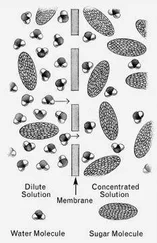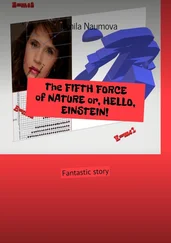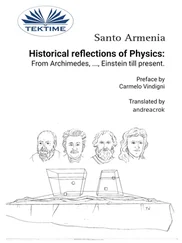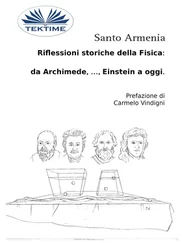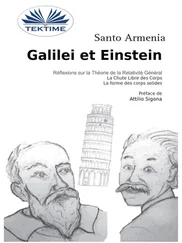“But some wild-eyed theoretical speculation is not what you need at the moment. You can’t support a half-baked experiment with a half-baked theory. You need to find more events with the same signature. If you can show that it happens more than once, you might be able to attract a few believers. Perhaps even me.” He looked sharply at George.
“You’re not convinced?” said George.
Roger studied the brightly colored representation of the event. “It’s beautiful data,” he said, “and I’d love to believe it was the first inkling of some brand-new physical phenomenon. But my good sense tells me that it’s far more likely to be some fluke or glitch in the equipment. You need more evidence, George.”
“I’ve already looked for similar events in our data. There are none. What if this stimulated emission process of yours is very rare? What if it only happens once in ten years? Or a hundred?”
“Then you’re well and truly screwed,” Roger said. “Unless…” An interesting idea had suddenly popped into his head.
“Unless…?” said George.
“Unless your mystery particle is stable. Perhaps a quarter of the hypothetical particles that I could conjure up for you from the dregs and leftovers of theoretical physics are simply too weird to decay into normal particles, so they must hang around. They possess conserved quantum numbers that they can’t easily get rid of.”
“Then,” said George, “the damned thing could have stopped somewhere in the LEM detector and still be sitting there…”
“Or in the walls of the tunnel, or on the dome of the Ellis County Courthouse, or it could be well on its way out of the solar system,” said Roger. He was beginning to develop a nasty headache. “Anyhow, do some kinematic reconstruction. Assume that your particle has a Planck mass. About a microgram, say. Assume it’s losing energy like mad, perhaps in the color ionization that’s producing all those jets. From that energy loss and your time of flight information you should be able to roughly estimate how far it’s going to travel. Or perhaps check your detector for any odd instrumental behavior along the flight path of your mystery particle.”
Roger winced as his headache intensified. As he had been talking to George, he realized, several new approaches to his QCD perturbation problem had occurred to him. One of them was so radical and beautiful that it hurt him to think about it. But it was a pleasant pain. He stood up. “I’m afraid you’ll have to excuse me now, George,” he said. “I’m much in need of some aspirin for a roaring headache that just came on.
“And I have a load of work to do. I have to prepare for my particle theory seminar tomorrow afternoon. I’ve just given birth to a brand-new and very beautiful brick of an idea, which I’m going to use to bash out the brains of my colleagues.” He was amused by the thought.
GEORGE BLINKED AND TURNED HIS HEAD TO THE RIGHT, hearing as he did so the motor whirr of the remote he had just linked into. He recognized his new location as the charging dock of the LEM counting house. He looked in the wall mirror, saw his own familiar features on the headscreen, and adjusted the height of the remote to one hundred eighty centimeters, matching his own. Across the room he could see Jake Wang, impeccably attired in a pearl-gray business suit. He was talking to and gesturing at Murray, clad as usual in yellow SSC coveralls.
“You have to get those new transputer chips for us, Murray,” Jake said. “There’s no alternative. The machine people are improving the luminosity, and as the data rate goes up, we’re getting more and more dead time. It would be a great embarrassment if I had to ask them to turn down the luminosity to keep our electronics from hanging. We must have those faster transputer chips.”
“Sure, Jake,” said Murray. “Maybe I should call up the Secretary of the Navy and tell him that his jets don’t need fast transputer VLSIs in their radar. Maybe…” He stopped talking and looked thoughtful. “You know, I do have a friend in the testing and quality control department at Inmos. We used to work together at Motorola. Last time I talked to him, he was complaining about how much trouble they were having with testing their new transputer chips for radiation damage. Their sources weren’t hot enough or didn’t have the right spectrum or something. Maybe we could, uh, volunteer to help him out with some of the testing. Any transputer chip that can survive in the middle of the LEM detector should have no problem at all in a nuclear war.”
Jake paused and seemed to be absorbing the idea, then grinned. “Superb thinking, Murray,” he said, clapping him on the back. “Do it! I’ll check with you later.” He turned to the remote. “Hello, George,” he said. “You were on the owl shift last night, and I didn’t expect to see you until tomorrow. You should be sleeping. Where are you?”
George wondered if Jake had heard about the Snark event yet. He put on what he hoped was a charming grin. “I’m upstairs in my office,” he said. “I’ll sleep later, Jake. I was giving Ms. Lang a demonstration of the use of remotes, and I found you here. Jake, I need to talk to you about an event we recorded early this morning. It’s now our leading candidate for weird event of the year,” he said.
Jake frowned. “Weird in what way?” he asked.
Apparently the news hadn’t reached him, George thought. The students and postdocs were afraid of Jake and didn’t talk to him if they could avoid it. “Well,” he began, “in most ways it’s a normal collision. The Fermi motions of both interacting quarks must have boosted the collision energy a bit, but otherwise it’s very much like our other central collisions, except for one thing. There’s an extra particle coming from the vertex. A most unusual extra particle.”
“Unusual?” Jake said. George noticed that the brightness of his brown eyes seemed to intensify. He was interested. “Exactly what kind of unusual particle, George?”
George gestured with the remote’s right arm and metal hand. “First, it’s not a Higgs, Jake,” he said quickly and watched as the brightness faded. “It’s not any particle that you could hang a theorist’s label on. It came straight out of the vertex, leaving a huge ionization trail but not a trace of any deflection in the magnetic field. It made a new jet every few millimeters, twenty-nine jets in all, and all of them pointing roughly forward in the momentum direction of the particle. But the inner time-of-flight system claims the thing was only moving at about 2 percent of the speed of light when it went by. It has to be massive as hell.”
“Couldn’t you get its mass from the missing energy?” Jake asked.
George shook his head, hearing the remote’s motors whirr as he did so. “No missing energy, Jake. The event conserves energy and momentum only when the extra particle is removed from the analysis.”
Jake stared in George’s direction for a moment, then broke into a peal of ironic laughter. “You mean…” he said, then stopped to laugh again. “You mean that you’ve not only discovered a new particle of great mass, George, but you’ve also discovered a violation of energy conservation! And momentum conservation, too, no doubt!” He lapsed into laughter again, stopped abruptly to frown at George, then turned on the Stare.
Then, quite abruptly, the Stare was transformed into a broad smile. “We shall call a press conference immediately to announce your great discovery, George. We must give a name to this remarkable new particle of yours. I know! We’ll name it after you! We’ll announce to the assembled multitudes of reporters that you’ve discovered the” — he broke into laughter again — “… the George-on! Or wait! Perhaps it’s neutral. We could call it the George-ino!”
Читать дальше




